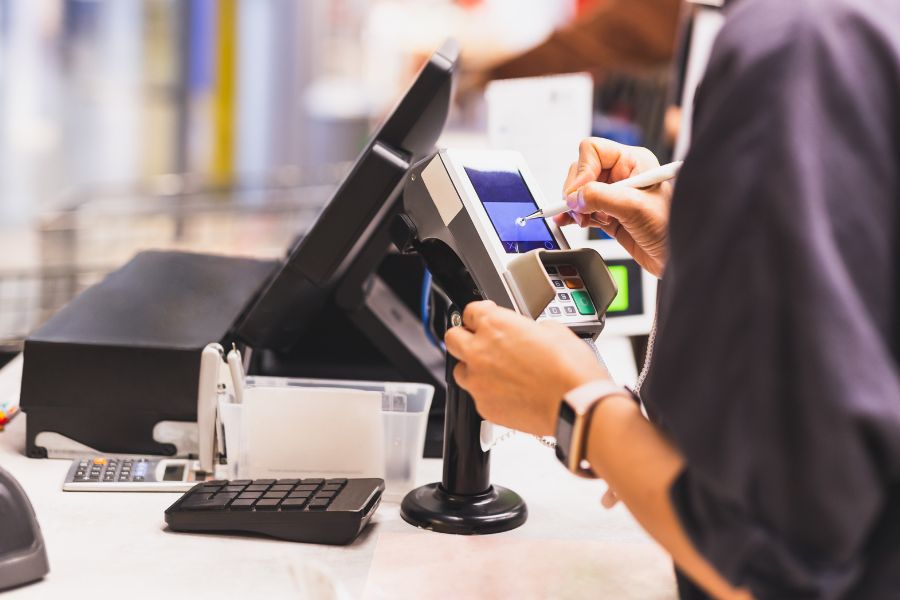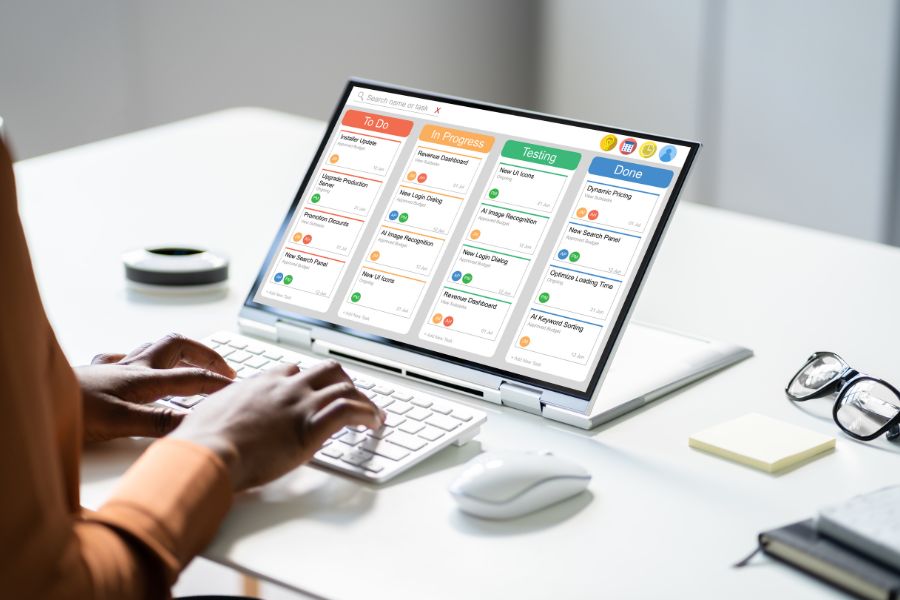Are you new to the eCommerce retail world and unsure what top retail models you should consider? Or are you already a retailer seeking another way to grow your business? Either way, this article will provide the top eCommerce retail models that you should know and their corresponding characteristics.
B2B
B2B (short for “business-to-business”) refers to online order transactions between companies, such as wholesalers or retailers, or manufacturers and wholesalers. It commonly happens when a company provides materials for other companies.
Examples for B2B business modules are suppliers who sell raw materials to companies, companies offering services to other companies (ranging from cleaning to consulting service), or wholesale businesses selling large quantities of products to retailers.
B2C
B2C (short for “business-to-consumer”) is the next retail model focusing on transactions between a corporation selling goods/services and individual consumers who use those products. The B2C eCommerce concept refers to transactions conducted via a company website or other online platforms such as social media or marketplaces.
B2C eCommerce has become one of the most common types of retail model, with over 2 billion people have bought goods or services online in 2020.
The B2C eCommerce model is well-known among Internet users, as consumers like the convenience of online shopping, which allows them to shop everywhere. Without a doubt, the industry will continue to grow, and this market’s full potential has yet to be realized.
C2C
Customer-to-customer (C2C) is a retail model in which consumers trade with one another, usually via the Internet. In other words, C2C happens when one customer buys products from another customer through a third-party company or website. C2C businesses are a form of a business model that arose due to eCommerce and the sharing economy.
Auctions and classified ads are two examples of C2C markets. With the advent of the Internet, companies like eBay, Etsy, and Craigslist, C2C have exploded in popularity.
With C2C, customers can find things that are hard to find elsewhere. Additionally, sellers’ margins will be higher than with conventional pricing approaches since there are no dealers or wholesalers.
Moreover, C2C sites are accessible because they eliminate the need to visit a physical store. The buyers can easily come to the sellers after the goods have been published on an online site.
C2B
Consumer-to-business (C2B) is the next one on our list of retail models in which individuals (consumers) generate value and businesses benefit from it.
It happens when consumers write a review or feedback about the companies’ goods or services, or when they recommend excellent ideas for the product development process. This is often seen in online places where customers are free to leave a comment or rate the product they have bought. In addition, C2B can also be co-creating ideas when consumers are involved in the production procedures with the company.
O2O
Online-to-offline (O2O) is a phrase often used in digital marketing. As you can tell by its name, this approach combines online marketing techniques with offline marketing techniques.
It is one of the retail models that attract potential customers to make purchases in physical stores through online channels. Customers are identified in the online space, such as by emails and Internet ads, and businesses will use a range of methods and techniques to entice them to make purchases in offline stores.
Dropshipping
Dropshipping is one of the best-known retail models which can be done on eCommerce sites. Companies can sell goods without inventory in hand. Instead, the store sells the item and then sends the purchase order to a third-party vendor, who then prepares and delivers the order to the customer.
However, dropshipping is not, contrary to common opinion, a get-rich-quick scheme. It seems to be straightforward money — you sell other people’s products and keep a cut. But it’s far from simple when you consider all the disadvantages, challenges, and day-to-day management.
Read more: 10 Popular Wholesale Business Examples
Print on Demand
Print on demand is a method of customizing white-label items with your designs and selling them under your name on a per-order basis. In other words, the company keeps the white-label products in their warehouses and prints designs on them if there is an order. The final products are then shipped to customers.
Some of the most common types of products are tote bags, coffee mugs, posters, T-shirts, hats, and so on.
Subscription Service
The subscription business model operates when a consumer would pay a monthly fee for access to a product at regular intervals. Simply put, customers pay for a certain amount of money to gain access to the premium version of the product/service.
Publishers of books and periodicals pioneered the concept in the 17th century, and many companies and websites still use it. Nowadays, subscription service involves more than publishers of books – they can also be a tech company that sells a point-of-sale system to retailers, a design website offering tools for businesses and students, etc.
White Label
White label stores are companies producing products that other businesses will rebrand. To put it in another way, white labeling happens when the provider doesn’t include their brands/logos on the product, but uses the branding requested from the buyer companies.
Although white-label companies are free of production and quality control management, they face fierce competition. Since any reseller can sell these goods, they hardly have unique selling points and must rely on marketing campaigns and distribution networks to stand out.
Conclusion
These are the top retail models you should know as a businessman/woman. Our last thought is that any of these models need a sufficient point-of-sale system to manage the selling activities. ConnectPOS is a point-of-sale provider that has supported more than 2,000 retailers around the world. Start writing your success with us here.
ConnectPOS is a all-in-one point of sale solution tailored to meet your eCommerce POS needs, streamline business operations, boost sales, and enhance customer experience in diverse industries. We offer custom POS with features, pricing, and plans to suit your unique business requirements.




